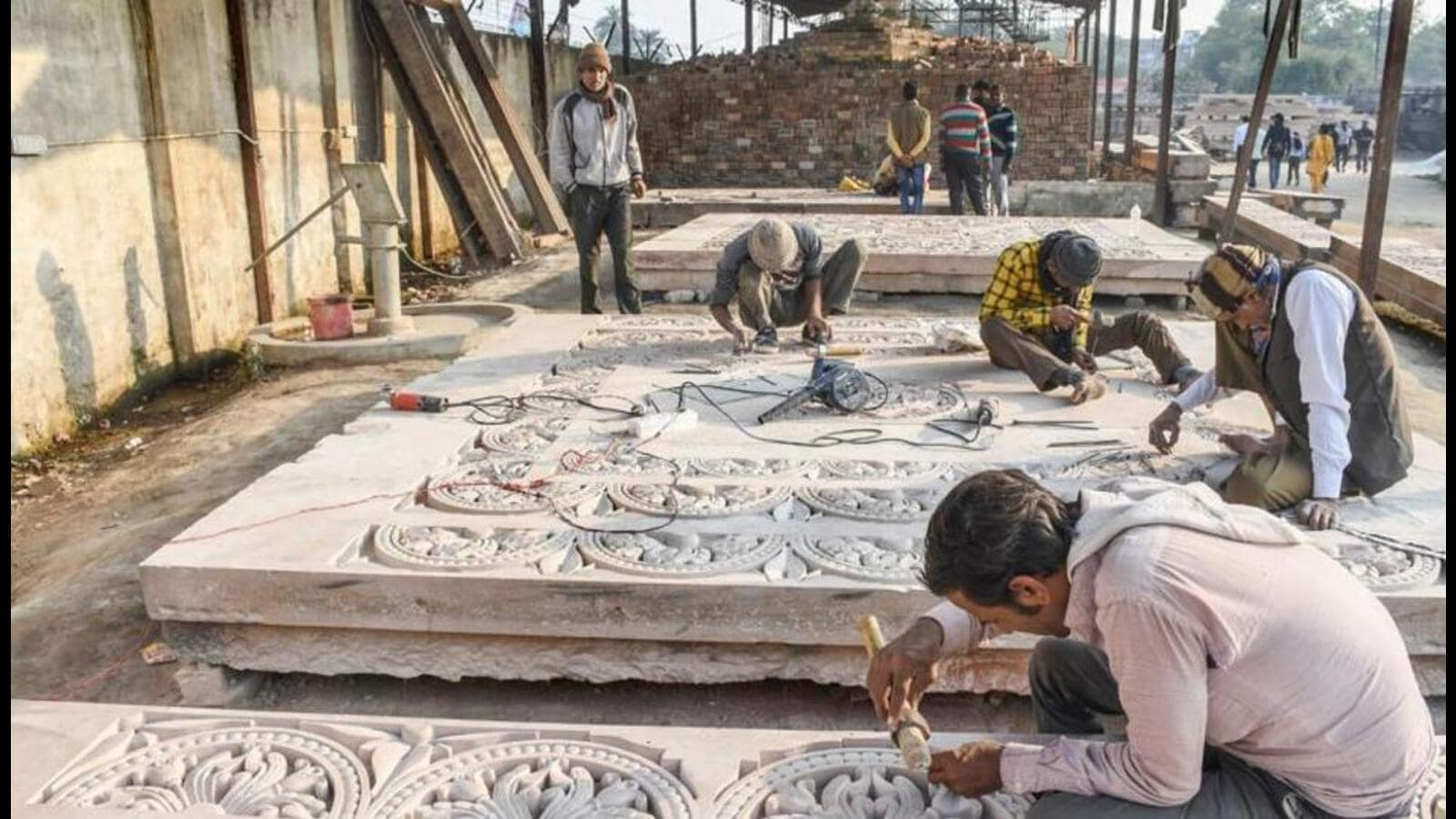More than 40 of Ram temple construction work complete in Ayodhya
Admin - 3 years ago
 India
India
More than 40 per cent of the construction of the Ram temple in Ayodhya has been completed within two years of the groundbreaking ceremony conducted by Prime Minister Narendra Modi, according to officials of the trust entrusted with the responsibility.
Devotees from all over the world could pay obeisance to the deity from December 2023, Champat Rai, general secretary, Shri Ram Janmabhoomi Trust, told PTI.
Construction, as well as demolition activities for improving the roads around the temple, are also on in full swing, the trust officials said.
“More than 40 per cent of the temple construction work is complete. More than 80 per cent of the plinth work is done. Darshan at the temple is likely to start from December 2023,” Rai said.Subscriber Only StoriesView AllPremium"˜Fake bills"™, a missing partner and TMC leader"™s guard in new CBI charges...PremiumAnurag Thakur at Idea Exchange: Despite corruption charges, AAP is not wi...PremiumJames Webb telescope: Light on dark matterPremiumWhat next: removing 80,000 tonnes of debris of Supertech twin towers in 3...Subscribe Now to get 64% OFF
The next general election in the country is scheduled to be held in 2024.
Rai, who is stationed in Ayodhya and resides in Karsewak Puram, oversees the construction work, holds meetings and reviews the progress on a daily basis.
Also Read: |Ram temple construction moving at "˜fast pace"™: Trust
Asked about the source of the money used in the construction, Rai said, “Bhagwan ke karya ke liye dhan ki kya kami. Bhagwan ke charno me lakshmi baithi rehti hai (There cannot be any dearth of money for the cause of god).”Advertisement
According to the trust officials, a huge foundation is being laid in the soil to ensure the temple’s longevity and stability for at least a thousand years.
Talking about other civic work, they said a rectangular, two-storey parikrama road will be constructed, enclosing a total of eight acres of land including the area of the temple and its courtyard, and in its eastern part, there will be an entrance made of sandstone.
White marble from the Makrana hills in Rajasthan will be used inside the sanctum sanctorum of the temple, they said.Advertisement
The marble-carving work is in progress and some of the carved marble blocks have already been brought to Ayodhya, the officials added.
The quantity of stones used for the project is — around eight to nine lakh cubic feet of carved sandstone for the “parkota” (rampart), 6.37 lakh cubic feet of uncarved granite for the plinth, about 4.7 lakh cubic feet of carved pink sandstone for the main temple, 13,300 cubic feet of Makrana white carved marble for the construction of the sanctum sanctorum and 95,300 square feet of Makrana white carved marble for the flooring and cladding, they said.
At the temple “karyashala” (workshop), labourers, both men and women, were seen carving and polishing stones.
Those who come to this holy town in Uttar Pradesh to pay obeisance at the Ram temple make it a point to visit this place where large numbers of stones to be used in the temple construction are kept.
Modi had done the “bhoomipujan” for the construction of the temple on August 5, 2020.Advertisement
A Supreme Court verdict of November 9, 2019 paved the way for the construction of the Ram temple in Ayodhya.
Radhika Aiyer from Karnataka, who was posing for photographs in front of the stones with her children, said it was her privilege to visit the place and she wishes to come again once the construction work is complete.Advertisement
The site draws huge crowds even when the temple is closed, with people feeling blessed touching the stones that will be used to build the temple, Manoj, a local, said.
According to the plan, temples of Valmiki, Kewat, Shabari, Jatayu, Sita, Vighneshwar (Ganesh) and Sheshavatar (Lakshman) will also be constructed within a 70-acre area in the vicinity of the Ram temple.Advertisement
Besides the construction of the temple, demolition of shops and houses for widening the road leading to the famous Hanumangarhi mandir is also underway.
After initial protests, the work is going on peacefully, with the locals themselves voluntarily demolishing their shops and houses that come in the way of the road-widening project.
Asked about the ongoing road work, Vineet Gupta, a sweet shop owner in the lane leading to the Hanumangarhi temple, said, “There is no hurdle in Lord Ram’s cause. You can see that I am getting the marked portion of my shop demolished.” Ashish, who owns a shop selling puja material, echoed the same sentiment. He said things have finally started moving in Ayodhya.
“We spent our entire childhood seeing the temple movement. Now, the work has started and we are privileged to witness it in our lifetime,” he said.
A road crossing at Nayaghat named after legendary singer Lata Mangeshkar has also been planned and approved but the work is yet to start.
Seers said some of them were initially against the idea of naming the road crossing after the singer but a consensus has been arrived at and the work will start soon.